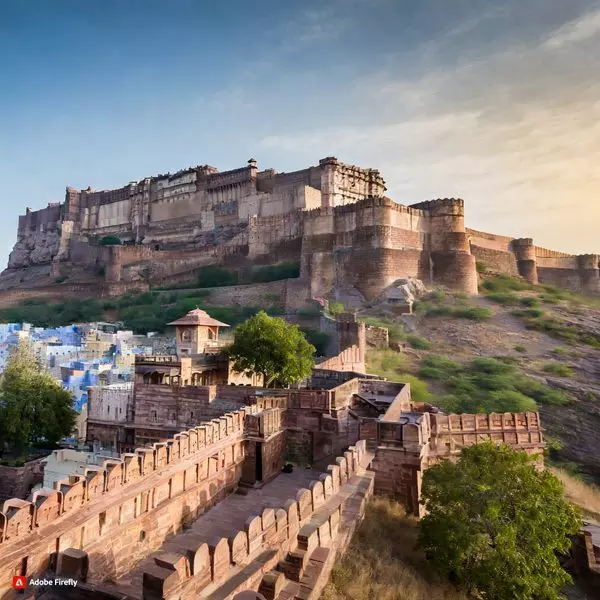Perched atop the Bhakurcheeria hill, Mehrangarh Fort, a majestic testament to Rajasthan’s royal history, has been a silent witness to centuries of triumphs and tribulations. Built in 1459 by the visionary Rajput ruler Rao Jodha, the fort holds within its walls a compelling saga of architectural brilliance, ancient curses, and a myriad of captivating tales.
The Cursed Origins:
Rao Jodha’s decision to relocate the capital from the vulnerable Mandore fort to the secure Mehrangarh was met with a unique challenge. The hill’s lone inhabitant, Cheeria Nathji, refused to vacate, and his influence over the locals deterred any use of force. Seeking assistance from Karni Mata of Deshnoke, Rao Jodha managed to convince Cheeria Nathji to leave, but not without incurring a curse. “Jodha! May your citadel suffer a scarcity of water!” rang the ominous prophecy. To appease the hermit, Rao Jodha erected a house and temple within the fort, thus weaving the curse into Mehrangarh’s narrative.
Film Sets and Tragedies:
Mehrangarh Fort, a cinematic marvel, has graced the silver screen in iconic films like Disney’s “The Jungle Book” (1994) and “The Dark Knight Rises” (2012). However, not all stories spun within its walls are celebratory. The fort bore witness to a tragic human stampede in 2008 at the Chamunda Mata Temple, claiming 249 lives and injuring over 400—an unfortunate chapter etched in the fort’s timeline.
Architectural Grandeur:
Mehrangarh Fort’s architectural prowess unfolds in its seven gates, each a testament to different rulers’ victories. Standing proudly at 410 feet, the fort boasts walls 117 feet long and 70 feet wide, safeguarding the palaces within. The Phool Mahal, Moti Mahal, Sheesh Mahal, and others showcase the opulence of Rajputana, while two temples, Nagnechi Mandir and Chamundi Devi Mandir, add a spiritual touch.
Cultural Extravaganzas and Festivals:
Beyond its historical significance, Mehrangarh Fort thrives as a cultural hub. The Rajasthan International Folk Festival in October and the World Sacred and Spirit Festival in February breathe life into the fort, celebrating the vibrancy of Rajasthani culture and the sacred traditions of India and beyond.
Thrills and Adventures:
For those seeking an adrenaline rush, Mehrangarh offers zip-lining tours, providing breathtaking views of the city, lakes, and gardens. The Chokelao Bagh, a serene garden within the fort, invites visitors to revel in nature’s beauty while savouring local delicacies.
In conclusion, we can say that Mehrangarh Fort, with its captivating history, architectural marvels, and the looming shadow of an ancient curse, stands as a symbol of Rajasthan’s rich heritage. From tragic tales to cinematic glamour, the fort weaves a narrative that transcends time. As visitors explore its corridors, Mehrangarh beckons with the promise of unraveling more secrets and adding new chapters to its storied past.
Also Read: The Impact Of Hunger On Decision-Making: Unveiling Key Insights













